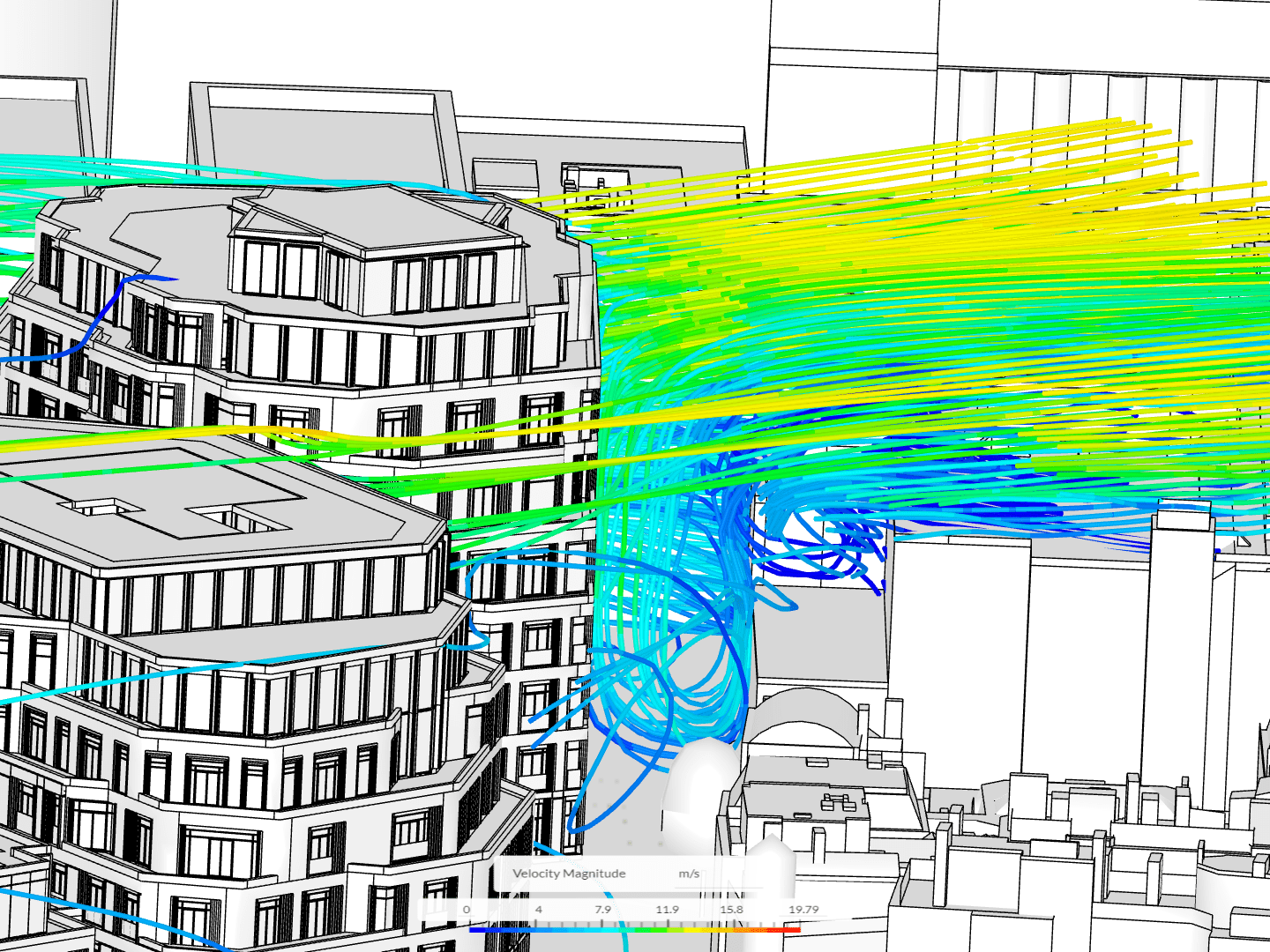
KPF is a unified architectural firm focused on the design of buildings of all types and scales, in all geographic regions. The firm consists of over 700 staff led by 34 principals with offices in New York, London, San Francisco, Shanghai, Hong Kong, Seoul, Abu Dhabi, Berlin, and Singapore. As a global practice, KPF designs lasting architectural solutions that mitigate their lifecycle impact on environmental resources and protect and enhance the wellbeing of the communities they serve.
Given the escalating climate crisis, KPF focuses on resilient architectural solutions that minimize operational and embodied carbon emissions. For this reason, KPF has joined the American Institute of Architects (AIA), Royal Institute of British Architects (RIBA), and many of its peers in a joint effort to develop the capabilities to design and deliver carbon-neutral buildings by 2030. This institutional effort is paired with developing the environmental expertise of KPF staff through education, knowledge exchange, and awareness. The Environmental Performance Design team in the London and New York offices has been creating innovative tools for early-stage modeling for wind and microclimate studies, using the powerful physics simulation engine from SimScale.
The environmental performance team KPFep is an entity that works within the broader technology team, along with digital practice, visualization, urban interface, data science, and applied research. Between the London and New York offices, KPFep currently has five full-time professionals offering support to design teams across the firm to meet their net-zero targets and build up a performance-based approach to design development.
As Sustainable Design Lead at KPF, Elias focuses on net-zero carbon strategies and on delivering high-performance building design beyond industry standards. The Environmental Performance team at KPF collaborates with design teams at all stages of the process to set the environmental agenda of a project and validate it with qualitative and quantitative performance data, parametric modeling, and iterative analysis. Elias has been leading innovation and technology efforts within the environmental performance team, including exploring new simulation platforms and tools; from wind simulations to early design energy assessment and life cycle modeling. His work also coordinates firm-wide initiatives to minimize the environmental impact of KPF projects, promoting awareness and educating designers about the principles of passive sustainable design and how this can be applied to modern construction methods.

SimScale offers cloud simulation technology for wind and microclimate studies. Its easy-to-use interface, automated workflows, integrated climate data, and visualization capabilities make it especially useful for architects and designers. SimScale computes building and urban wind simulations an order of magnitude faster than traditional computational fluid dynamics (CFD) tools. It is fully transient, meaning it can simulate and animate realistic and time-dependent wind conditions needed to understand complex flow behavior in urban environments. Users can import and simulate city-sized CAD models in minutes and hours compared to days for legacy CFD software. This has empowered architects to deploy wind modeling tools in early-stage competitions and bids, where fast, accurate and cost-effective simulations are needed. At KPF, SimScale is used on live projects and studies for competitive tenders that require a fast turnaround time.
Approximately 70% of wind modeling at KPF is used for competitions, and the value proposition that CFD-generated wind and pedestrian wind comfort studies bring to KPF has been proven many times. On live commercial projects, the wind studies conducted by KPF at the early stages provide invaluable insight to specialist wind consultants that might need to undertake wind tunnel studies for planning permissions with local authorities. Early-stage wind modeling has assisted in converging on a final design solution much faster by comparing the relative performance of competing designs and significantly, reducing the time and cost needed downstream during the more costly 3D model-based wind tunnel studies.
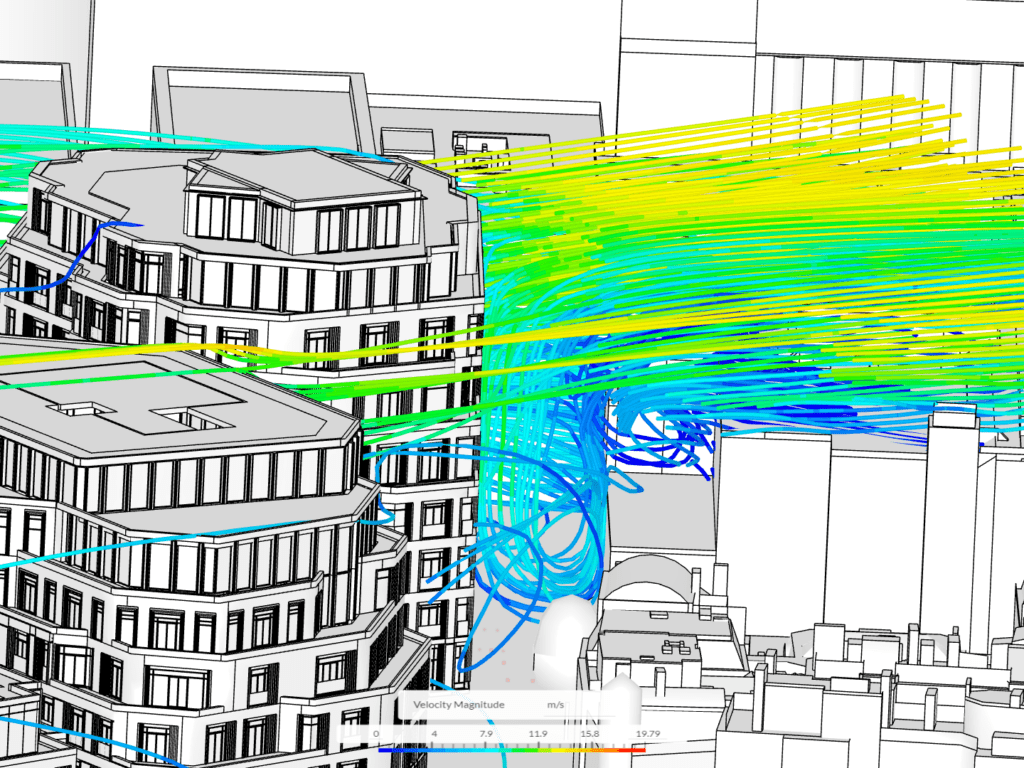
KPF architects mainly use Rhino® and Revit® on the majority of their projects. Both tools are heavily embedded into the design workflow at KPF and offer benefits depending on the design stage. A typical workflow might be to use Rhino at the concept/massing stage and then move to Revit for the more detailed stages and BIM-enabled drawings that hold performance data. SimScale works seamlessly with both CAD tools. Native Rhino files are quickly imported into SimScale without any CAD cleanup necessary. Likewise, exporting an STL file from Revit is the best approach to preparing complex geometry for simulation, an oft-quoted bottleneck when working with large models. The Lattice Boltzmann Method (LBM) solver Pacefish®, integrated into SimScale, offers fully transient external flow simulations. One of the key advantages of this approach is its robustness in importing complex CAD models. Because of the novel physics, the geometry no longer needs to be water-tight, and what used to be classified as imperfect geometry for simulation purposes is now easily handled in SimScale. Architects often quote this feature as the single biggest advantage of using SimScale over other tools.
KPF has gone a step further and, using the SimScale application programming interface (API), has developed an in-house Rhino app that uses the wind modeling engine in SimScale. The API is a way to access the SimScale platform and simulation engine, from any software, for any automated workflow. It is easy to use and comes with a C# and Python SDK. Users can set up a simulation with predefined results processing using a few lines of code. The API has templates for common use cases like simple simulation workflows and parametric studies. The Python SDK has made it accessible to a wide range of users at KPF, and expert support and intuitive documentation have helped KPF to design and develop their app in less than three months.
The ‘Wind Flow’ app is currently in beta development, with five architects across London and New York actively using the new tool in competitions and bids. KPF has multi-disciplinary skills in their teams including computational designers, coders, data scientists, and environmental designers. This meant that developing an early-stage microclimate app was an intuitive and logical next step to deploying wind studies across the entire organization.
The Wind Flow app is intended to:
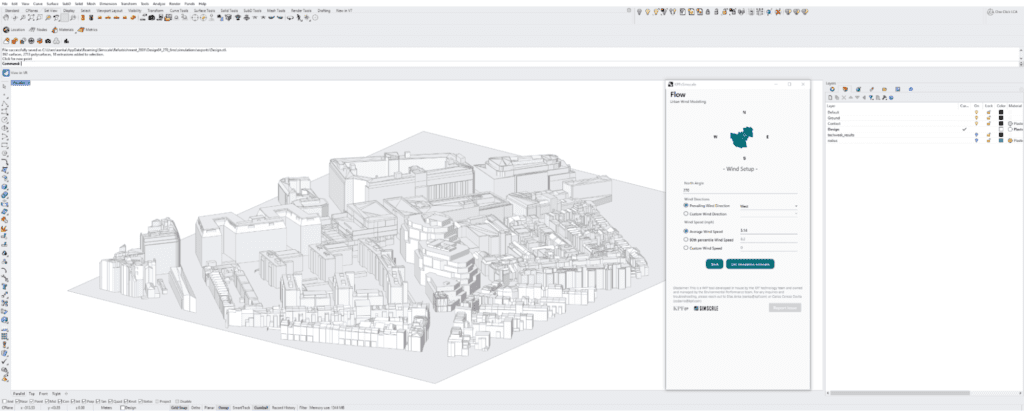
A high-level schematic of the app workflow is shown in the diagram below. The accessibility and user interface sit in Rhino that reads in data (CSV) using Python scripts to automate the data exchange between various databases and the SimScale API. This data includes project databases to keep track of design phases, costs, simulation run time, user details, etc. With this level of control, more advanced users and managers can exercise control and quality checks over a distributed design team of non-expert CFD users who are using the app.
Data output from SimScale includes actual simulation data such as probe point coordinates, result planes, and wind speeds. The entire workflow runs in the cloud including the wind simulations by SimScale. The API is used to instruct SimScale on what simulation parameters, climate data, mesh, and boundary conditions to use and to extract the relevant data for visualization in Rhino.
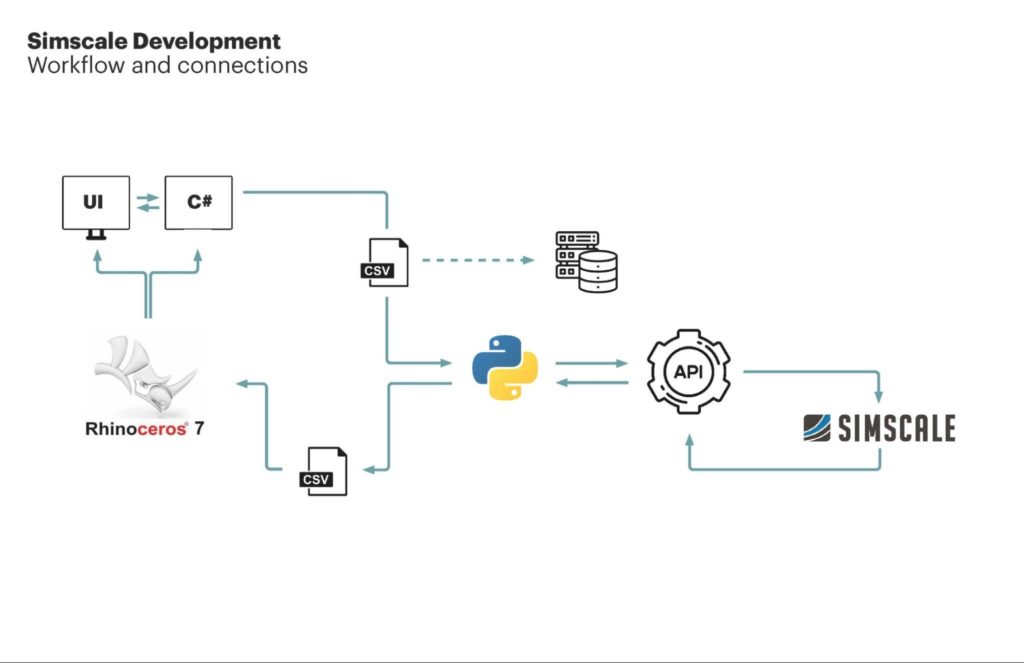
Justyna Szychowska and Aleksandra Sojka from KPF Urban Interface (KPFui) and KPF Data Science (KPFds) were involved in the front and back end development of the app and its implementation within the Rhino environment. They’re currently working on new features based on user feedback that will be deployed before the end of the year.
Using SimScale, we have developed our own wind modeling app for early-stage analysis. Our plan is to deploy this to over 100 architects globally, giving them access to fast and accurate microclimate analysis as and when needed. The aim is to equip our designers with the right toolset and knowledge to tackle climate change and be proactive in designing carbon neutral buildings and cities that prioritize the comfort and wellbeing of its occupants.

Elias Anka
Sustainable Design Lead at KPF (London)
A recent project modeled using the Wind Flow app is shown below. Pedestrian wind comfort (PWC) and building aerodynamics studies take just a few minutes to simulate. Users can quickly select the climate data/location and select the number of wind speeds. A series of dialog boxes appear in turn for architects to configure a wind study. The simulation is then sent to SimScale to run and the results are imported back into Rhino for visualization.
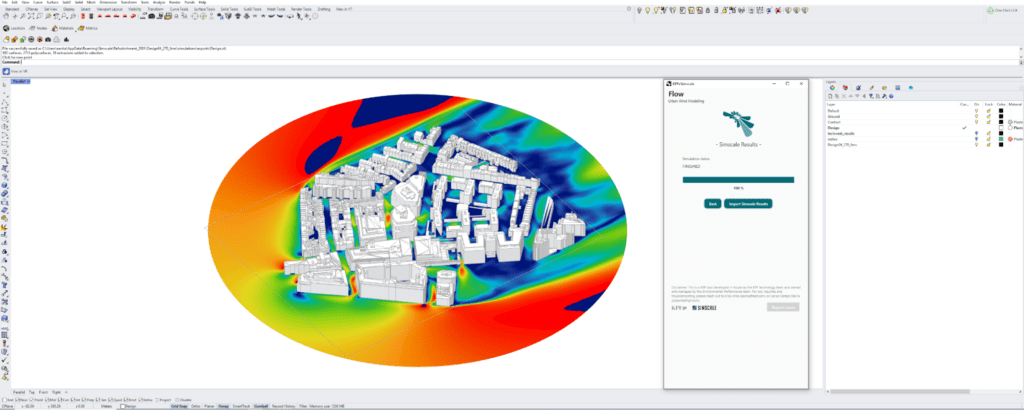
The KPF Rhino app has an active development roadmap. Future plans include different types of analysis and new powerful plugins for designers, such as outdoor thermal comfort, natural ventilation studies, and possibly moving to more indoor environmental analysis.
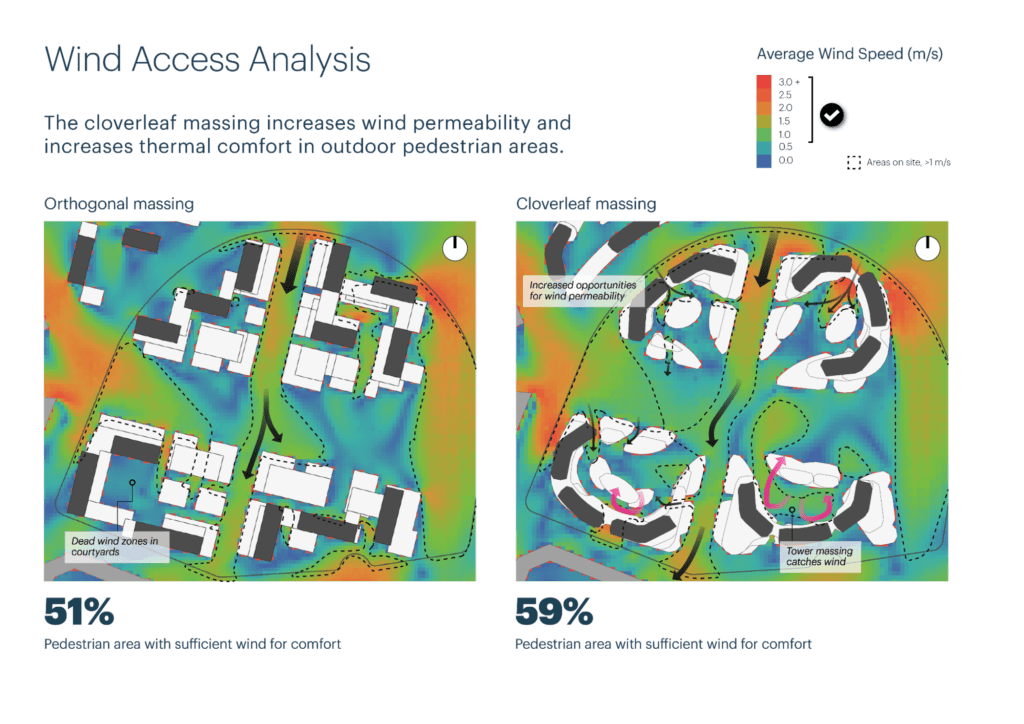
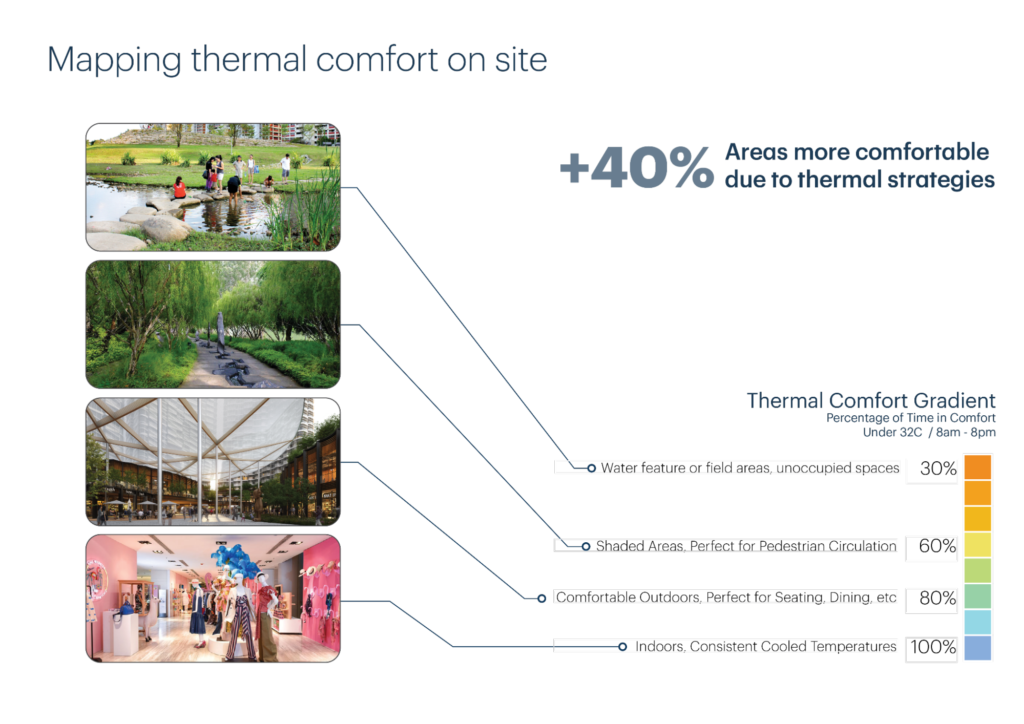
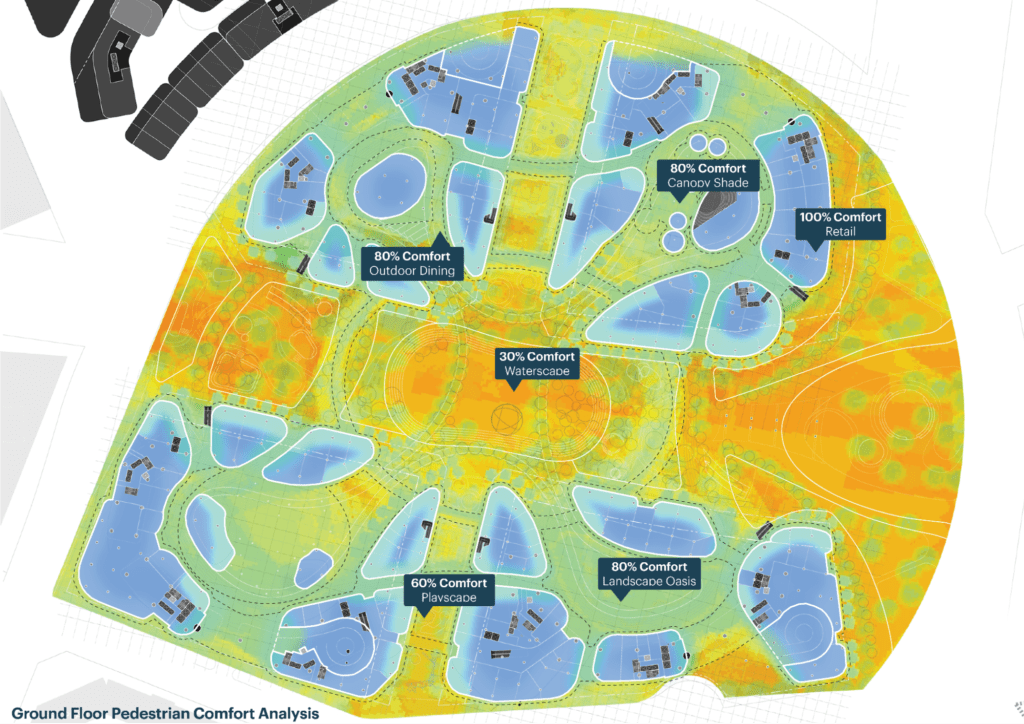
SimScale already has the features needed to evaluate the Universal Thermal Climate Index (UTCI) for external comfort and advanced solvers for simulating solar radiation, internal temperatures, CO2, and air quality. The immediate steps are to manage a steady roll-out of the app to architects across KPF with a supporting training program. The simple and intuitive interface will make it accessible to architects and non-expert CFD users.
Sign up for SimScale
and start simulating now